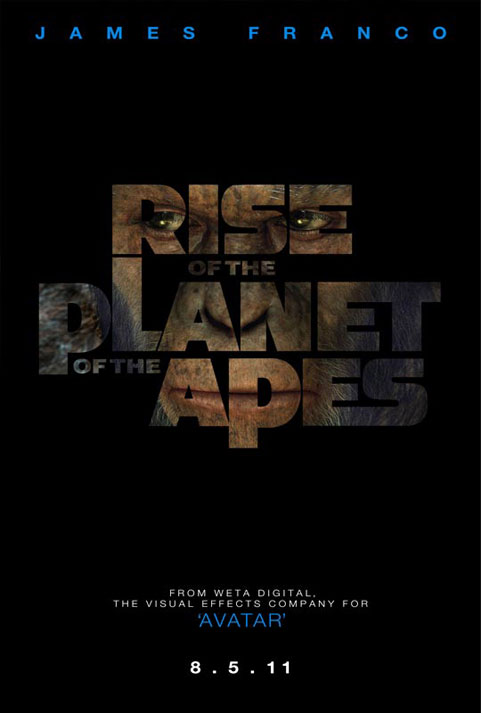“Rise of the Planet of the Apes” impresses, stays true to original films
“Rise of the Planet of the Apes” receives four and a half out of five stars.
August 30, 2011
I walked out of “Rise of the Planet of the Apes” thinking about the title with an air of sarcasm. After all, it could have arguably been instead named “Escape of the Apes who Later Conquer the Planet” or “Rise of the Ape who Sets the Stage for the Planet of the Apes.” Yet despite the cliched title and all jokes aside this a genuinely patient, well-paced and supremely entertaining piece of work. There is an excitement and pulse to it that sends it far beyond B-movie status.
As a fan of the older “Ape” movies — yes, there were more than one — and a skeptic of Tim
Burton’s sloppy re-imagining in 2001, I couldn’t help but appreciate every minute of
“Rise.” This is not purely based on my own nostalgia, but because every minute is a
literal and engaging build-up, a compilation of moments and instances that we as the audience well know lead to a planet ruled by apes. This fact is, however, unbeknown to the characters onscreen. We can only watch in woe.
Film focuses on one main character
Yet the foundation of this film is not built on the epic mustering of an ape army, not on
the fictitious chemical ALZ-112 that gives the apes their human intelligence, nor
even the very intimate story behind the motives of the would-be human hero Dr. Will Rodman played by the sometimes overly-composed James Franco.
Instead, the focus of the film is rightly centered on the main ape, Caesar, who is one of the best portrayed characters I’ve seen in recent years. I say “character” because it must be known that there is an actor beneath the CGI camouflage of fur and monkey flesh. Thank goodness an innovative performer like Andy Serkis is around today, else the revolutionary steps in motion-capture that brought us invaluable depictions of Gollum and King Kong would likely not yet exist. Don’t get me wrong, I’m sure the geniuses at Weta would have concocted a perfectly realistic Caesar made up completely of CGI as they did with many of the other ape extras. But there’s just something so poignant in knowing the expressions you see on Caesar’s face are the product of Serkis’ masterful acting. It is this fact that makes it a performance as opposed to a theatrically-trained video game.
The truth is Serkis’ Caesar makes the film. The apeʼs downturned face and evil, unblinking glare chills the soul as we understand the formidable intention and possibility behind it. Yet he is not a villain. Caesarʼs background and emotional evolution is well-developed as we see him grow from a young chimp capable of sign language into a smart and “powerful animal” as Caroline, played by the stunning Frida Pinto, puts so directly in the film. A powerful animal with the mind of a revolutionist, as it turns out.
Plot progression like a linear puzzle
The world we see in the 1968 “Ape” picture through the eyes of Charlton Heston is emphasized as being close on the horizon in this prequel, on the cusp of Caesar’s very existence. “Rise of the Planet of the Apes” director Rupert Wyatt and writers Rick Jaffa and Amanda Silver masterfully lay before the audience pieces to an ever linear puzzle that amounts to the ape-governed planet of the future. Every move Caesar makes and every choice made by the humans around him directly contribute to the downfall of humanity and, well, the rise of the apes! It’s a very sentimental plot progression for a “Planet of the Apes” fan like myself.
Acts one and two flow seamlessly into one another, and what I was faintly expecting to be a preposterous act three turned out to be a riveting climax that didn’t result in the apes conquering the planet at all. Instead it showed the necessary exodus of Caesar and his primate army from the human city, across the symbolic Golden Gate Bridge and into the vast Redwood forests of their providence. The apes gain their freedom and more importantly their right to be free, something Caesar had sought from the moment he had comprehended the symbolism of his leash.
Despite newer technology, film preserves original feel
Most important is that the film does not sacrifice the feel of the older “Ape” movies to
accommodate the gimmicky slight-of-hand methods of modern filmmaking seen in blockbusters like “Avatar” and “2012.” Instead, it worked alongside its breathtaking special effects rather than under them. It marked the first time in cinematic history that motion-capture was used so extensively in non-set environments, which is a breakthrough to say the least. One can only hope that a remake of “Planet of the Apes” will soon follow in the vein of this impressive prequel. Perhaps it could compensate for the ridiculous Tim Burton version that focused more on goofy spectacle than emotion, story and narrative thrill.
I give “Rise of the Planet of the Apes” 4½ out of 5. It is a beyond worthy predecessor to one of the most iconic films of all time. What keeps it from a solid 5/5 is nothing more than the fact that I rarely hand out that rating, one which would deem any film as “perfect.”
Tip: Be sure to remain in your theater seat when the ending credits begin. One should practice this custom anyway out of respect for those whose names roll on the screen, but a minute or so into these particular credits a scene is revealed that explains how exactly the apes acquired the planet so easily from the hands of the human race. It is a
monumental twist that blew me away almost as much as seeing a full-grown gorilla leap off of a bridge and into a moving helicopter.







